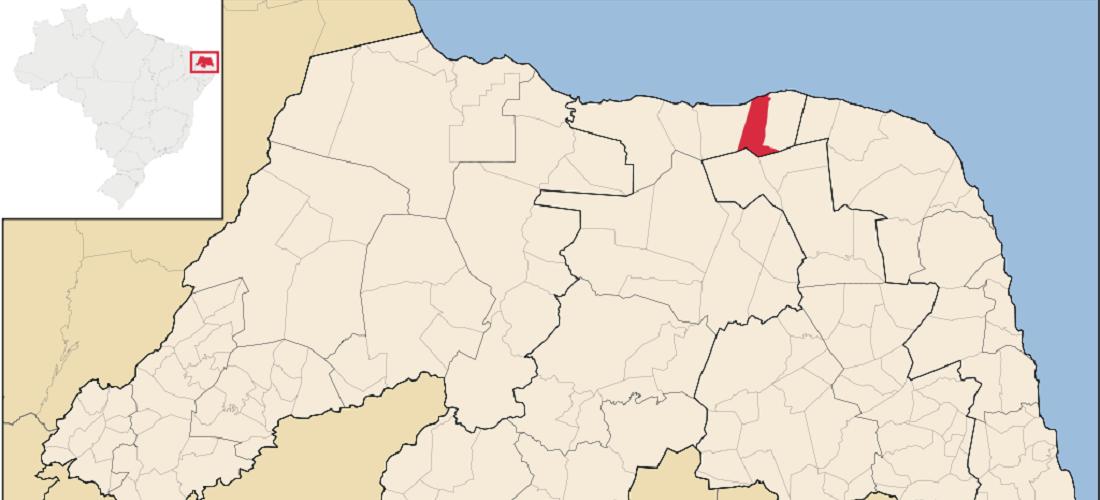
Industrial port project geared to the offshore market to launch in Brazil’s Rio Grande do Norte
Aug, 17, 2022 Posted by Gabriel MalheirosWeek 202233
The municipality of Porto do Mangue lost the dispute to Caiçara do Norte, 214 km from Mossoró and 160 km from Natal, in the competition to house the new Offshore Multipurpose Industrial Port designed for the landing of wind energy equipment and shipments of green hydrogen.
According to the State Secretariat for Economic Development, the physical works should begin in 2024, with completion expected in 2029. In addition, studies to install the port on the coast of Rio Grande do Norte are being carried out by the Federal University of Rio Grande do Norte (UFRN).
The municipalities of Natal and Touros were also in the dispute but were discarded for environmental and technical reasons. In Porto do Mangue, a geological crevice allows large vessels to approach the coast.
However, in addition to the Dunas do Rosado environmental reserve, one of the main postcards of the state’s northern coast, this region also has extensive production, processing, and exportation units of sea salt for the food industry.
In Touros, UFRN specialists determined that the region is strong in tourism and that, according to Secretary Silvio Torquato, expropriating 13,000 hectares on the coast to support the port is prohibitively expensive. They argue that the area is only for tourists.
Sílvio Torquato said that the next step is to advance in environmental, economic, and technical studies in the area and work on adapting legislation and the issue of environmental licensing. After that, the investment will be public/private.
The first assessment by UFRN is that raising at least R$ 6 billion in investment will be necessary. However, in the same study, the university points out that the return on this investment will occur in just 12 years, and not 35 years as is customary worldwide.
At least three large companies have shown interest, and the State Government has already signed protocols of intent. These companies are Spic, CCCC, and the Danish Vestas. In addition, other large companies have also shown interest in producing energy at sea.
The project for Rio Grande do Norte’s sea and coast is bold. It is not only about generating energy. It is to produce green hydrogen, the energy of the future, that France, Germany, and other countries will begin to use as their nuclear power plants are decommissioned.
According to secretary Silvio Torquato, the Offshore Multipurpose Industrial Port will be built far from the coast. Still, it will need an area of 13,000 hectares of land, which was vital to choosing Caiçara do Norte as the territory that shall receive the investment.
Also, according to the secretary, the ports of Natal, Guamaré, and Areia Branca will continue to operate as they currently do. All of them, according to Sílvio Torquato, are essential for the development of Rio Grande do Norte.
Porto Ilha ships salt at an average of 3.4 million tonnes per year. The port of Guamaré mainly ships oil. Natal’s port should continue to export fruits and stones, as well as receive cruise ships carrying tourists.
Rio Grande do Norte, with this investment, hopes to enter the race with the states of Ceará, Pernambuco, and Bahia for the production and export of green hydrogen, which is considered the fuel of the future. These other states have started the procedures for producing and exporting hydrogen.
Source: Mossoró Hoje
To read the full original article, please go to: https://mossorohoje.com.br/noticias/42257-porto-do-mangue-perde-porto-industria-para-o-municipio-de-caicara-do-norte-rn
-
Other Cargo
Mar, 13, 2024
0
Brazil’s footwear exports trapped in downward trend in early 2024
-
Ports and Terminals
Jan, 04, 2024
0
Porto Itapoá Leads Carbon Neutrality Initiative in Brazilian Ports
-
Other Cargo
Jun, 17, 2021
0
Ceramic sector records best April ever for exports
-
Trade Regulations
Mar, 23, 2022
0
Senate approves tax exemption on imported photographic equipment


